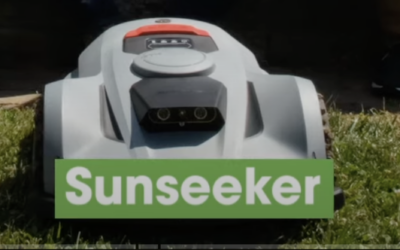Winter can seem like an endless, dark season. Why is it so cold? Why is there no sunlight at 4 pm?
Oh, how you wish for the first bloom of spring.
Bit then it happens. They snow starts to melt. Hooray! Winter is over.
But what you see next has you back, shivering in fear.
What is it? Winter injury on your lawn!
Aaaaaahhhhhh!
You survived the harsh winter. But your lawn wasn’t so lucky. And now your celebration of spring has become morbid. All those dead patches of grass.
Even the start of baseball season can’t shake off those winter blues.
So what is winter injury anyway?
The cold weather has come to an end. The leaves on the trees are turning green. But that doesn’t mean winter hasn’t left its mark.
Winter injury is the severe damage that your lawn may experience from the deep cold.
Maybe you’ve got some dead patches. Or worse. You’re seeing signs of damage everywhere.
What exactly causes winter injury?
You can escape the cold. You gather around the fireplace, or crank up your heater.
But your lawn isn’t quite so lucky. It has to survive the winter without even a pair of wooly socks. In fact, it’s just sitting out there butt naked! Brrrrrrr!
You’ve got really cold temperatures. Plus, you’ve got the harsh effects of frost. And on top of that, your lawn might not be getting enough water.
Maybe you’ve got snow mold. (That’s fungus that can grow in snow.)
Or perhaps voles or squirrels took a bite out of your lawn. Those little critters can create big damage. This is such a common lawn problem that we wrote an entire blog article about how to keep squirrels from damaging your lawn.
And let’s face it. Your lawn isn’t getting the attentive care of spring, summer, or fall.
And there you have it. Now you’ve got winter injury.
So what does winter injury look like on your lawn?
Now you’re aware of winter injury. So how do you know you actually have it?
Here are the dreaded signs of winter injury.
Brown patches of grass
You want your lawn to be lush and green. But that’s not what you get with winter injury.
Instead, you’re seeing ugly patches of the color brown.
You might just see a couple of ugly brown patches. But if you’re really unlucky, you may see them all over your lawn.
And quite frankly, this sucks. Because this can happen even if you give your lawn extra TLC during the warmer months.
Winter injury doesn’t discriminate.
Spots that are completely bald
You may fertilize and care for your lawn all year long. So imagine your surprise when the snow starts to melt and you see parts of your lawn that aren’t growing grass at all.
Ahhhh! You’ve got bald spots!
They weren’t there in the fall. But now it’s spring and your lawn has areas that are completely bare.
You wish that you could buy them a toupe. But those bare spots are horribly difficult to hide.
The harsh effects of winter weather have bitten again!
Lawn that just isn’t that green
Kermit said, “it’s not being green.” But you know what is more difficult? Looking at a lawn that has lost its color.
Green is the color of health. When the color is faded or muted, you’ve got a problem.
Your grass just looks unhappy and unhealthy. And you now have winter injury.
What to do next
Now you know how to identify winter injury. But what do you do next now that you’re feeling like the underdog?
Do you have small brown or bald patches? Now you need to re-seed.
But what if the winter injury is more extensive? Then it’s time to re-sod.
Either way, the game isn’t over. And spring can bring back the health of your lawn.
Winter injury may not look pretty. But with a little TLC, the nightmare effects of winter will be just a passing setback. Winter kill won’t get the best of you!





